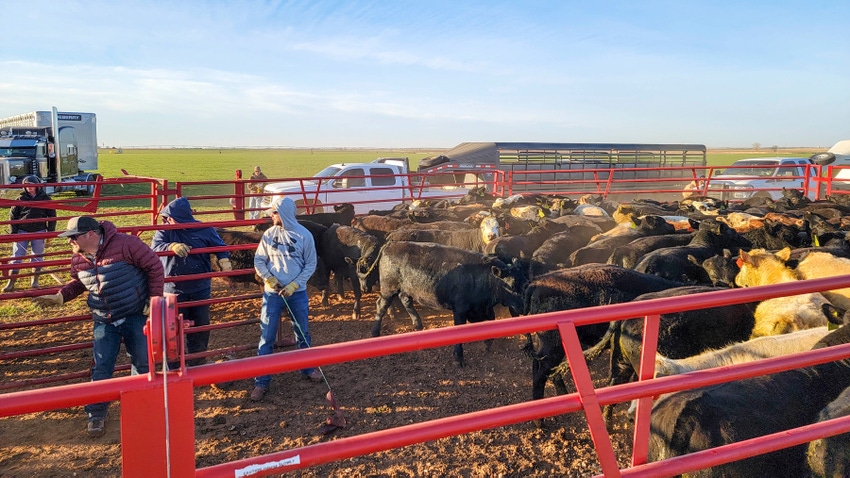Safeguarding Success: Bagley Risk Management Services
Safeguarding Success: Bagley Risk Management Services
Blog Article
The Advantages of Animals Risk Defense (LRP) Insurance Policy Described
Livestock Danger Defense (LRP) insurance coverage offers as a vital device for animals producers browsing the unforeseeable surface of market variations and unanticipated losses. The real value and complexities of this insurance coverage instrument go much past mere security-- they symbolize a positive technique that can redefine the landscape for livestock producers.
Financial Protection Against Market Volatility

LRP insurance policy supplies producers with an important tool to handle price danger, offering coverage that can help counter possible losses resulting from adverse market movements. In significance, LRP insurance coverage serves as a positive danger management strategy that equips animals manufacturers to browse the challenges of a dynamic market landscape with higher confidence and security.
Insurance Coverage for Unforeseen Losses
Livestock Danger Defense (LRP) insurance policy uses extensive insurance coverage to guard livestock manufacturers against unexpected losses in the volatile market landscape. This insurance coverage provides protection in situations where unexpected events such as condition break outs, all-natural disasters, or significant market rate fluctuations can bring about financial difficulties for animals producers. By having LRP insurance coverage, producers can reduce the threats associated with these unpredicted situations and make certain a degree of monetary security for their procedures.
One of the essential benefits of LRP insurance is that it allows producers to customize their insurance coverage based on their particular requirements and run the risk of tolerance. This versatility enables producers to tailor their policies to secure versus the sorts of losses that are most relevant to their operations. Furthermore, LRP insurance policy uses an uncomplicated cases procedure, aiding manufacturers swiftly recoup from unforeseen losses and resume their procedures without substantial interruptions.
Threat Administration for Livestock Producers

One trick element of risk administration for animals producers is diversity. By diversifying their animals profile, producers can spread out danger throughout various species or breeds, lowering the influence of a prospective loss in any solitary location. Furthermore, maintaining thorough and precise records can aid manufacturers recognize patterns, trends, and potential locations of danger within their procedures.
Insurance coverage items like Animals Danger Defense (LRP) can additionally play a vital duty in risk monitoring. LRP insurance offers producers with a safeguard against unexpected price declines, using them assurance and monetary protection in times of market instability. Overall, a detailed threat management strategy that combines insurance coverage, record-keeping, and diversity can aid animals producers Recommended Reading efficiently navigate the difficulties of the market.
Tailored Policies to Match Your Needs
Tailoring insurance coverage to line up with the details demands and conditions of animals producers is extremely important in ensuring thorough danger administration techniques (Bagley Risk Management). Livestock manufacturers encounter a myriad of obstacles one-of-a-kind to their market, such as varying market value, unpredictable climate patterns, and animal health concerns. To address these threats successfully, insurance coverage providers offer customized policies that accommodate the diverse demands of livestock manufacturers
One key aspect of tailored animals insurance plan is the capability to customize insurance coverage limitations based upon the size of the procedure and the kinds of animals being raised. This adaptability makes sure that producers are under-insured or not over-insured, enabling them to click for source protect their assets properly without paying for unnecessary coverage.
Additionally, customized policies may additionally include certain stipulations for various kinds of animals operations, such as dairy products ranches, ranches, or chicken manufacturers. By tailoring protection to match the special characteristics of each operation, insurance coverage companies can offer comprehensive security that addresses the details risks faced by various kinds of livestock manufacturers. Eventually, selecting a customized insurance plan can provide peace of mind and monetary safety for animals producers despite unanticipated difficulties.
Government-Subsidized Insurance Options
In considering threat monitoring strategies customized to the details needs of livestock producers, it is vital to discover the Government-subsidized insurance coverage alternatives offered to reduce economic uncertainties efficiently. Government-subsidized insurance choices play a vital function in providing affordable danger monitoring devices for livestock producers (Bagley Risk Management). These programs are created to sustain producers in safeguarding their operations versus various threats such as rate fluctuations, natural catastrophes, and various other unexpected events that can impact their bottom line. By offering subsidies, the federal government aims to make insurance coverage a lot more available and cost-efficient for manufacturers, motivating them to proactively handle their dangers.
One prominent instance of a government-subsidized insurance policy option is the Livestock Danger Protection (LRP) program, which gives defense against a decline in market value. With LRP, manufacturers can insure their livestock at a details coverage degree, therefore guaranteeing a minimal cost for their animals at the end of the insurance coverage period. By leveraging these subsidized insurance options, animals manufacturers can improve their monetary safety and security, ultimately adding to the resilience of the farming market all at once.
Conclusion

In verdict, Livestock Threat Protection (LRP) insurance policy uses economic protection versus market volatility and unexpected losses for livestock producers. Government-subsidized insurance choices further enhance the access and price of LRP insurance for producers.
Livestock Danger Defense (LRP) insurance offers as an essential tool for livestock producers navigating the unpredictable terrain of market variations check this site out and unpredicted losses.In today's unpredictable market setting, livestock manufacturers can profit substantially from protecting financial security against market volatility via Animals Risk Defense (LRP) insurance. In essence, LRP insurance offers as a proactive danger monitoring approach that equips animals producers to browse the obstacles of a dynamic market landscape with greater self-confidence and protection.
Animals Threat Defense (LRP) insurance coverage provides thorough insurance coverage to guard livestock producers versus unforeseen losses in the unstable market landscape.In conclusion, Livestock Threat Security (LRP) insurance policy supplies monetary security against market volatility and unforeseen losses for livestock producers.
Report this page